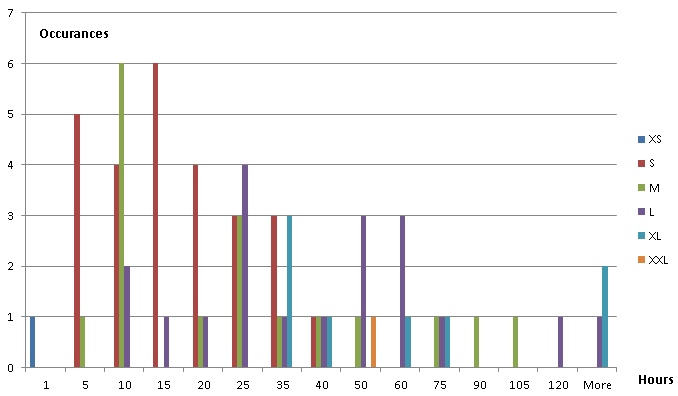Recently I was present with a task estimation technique. Instead of letting people rate a task for x - amount of hours, I let them discretize tasks into discrete sizes like small / medium / large / x-large. (The tasks are planning poker from scrum for people aware of this.)
After a bit of tracking we should be able to estimate the duration based upon historical data (i.e. statistics). I have been given a set of sample data (real data, but not from my work) and would like see there actually can be made any distribution which fit this. (Of course, I would need to recalculate this for my own tasks.)
The distributions from the presentations look like this:

It seem like some right skewed distribution. From University, I recall working with a distribution looking like this, but I am not certain about the name. I was hoping for something parametric where I can derive some simple parameters form the data (like mean and variance for a normal distribution)
I have made a histogram of the data:

(I know there are too few data.)
